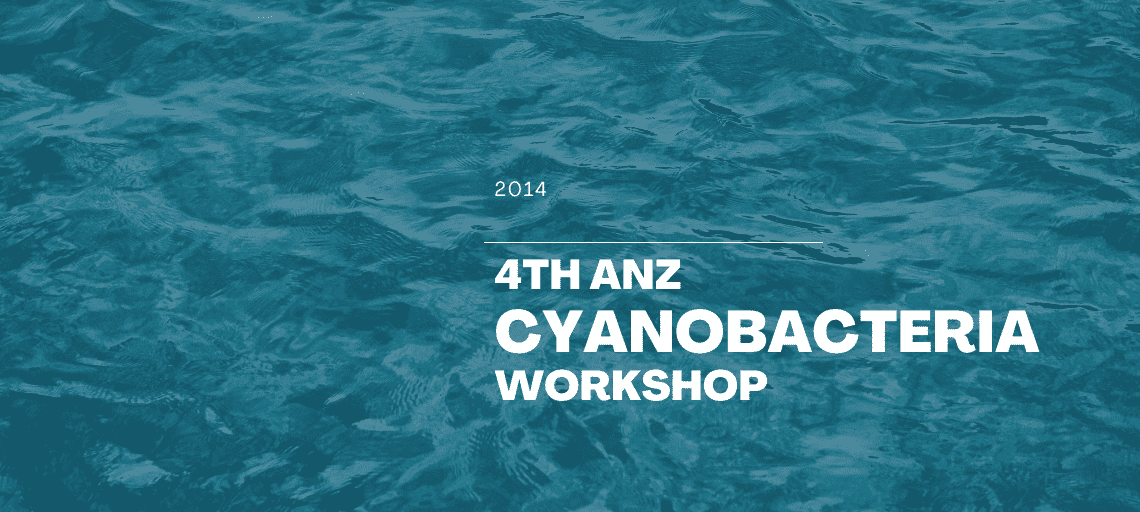The Fourth National Cyanobacteria Workshop was held on 22-24 September 2014 in Adelaide, South Australia.
This National cyanobacteria workshop was hosted by SA Water, the University of Adelaide and Water Research Australia and addressed the conference theme: Benefits and application of research and technology for the management of cyanobacteria
Attending the workshop were people from Australia, New Zealand and China involved in the management of public health, water resources and drinking water supplies, and core cyanobacterial research.
The workshop was organised by Dr Gayle Newcombe, Manager Customer Value & Water Quality Research, Australian Water Quality Centre, SA Water, together with an organising committee comprising:
- Dr Andrew Humpage – Australian Water Quality Centre, SA WaterAssociate
- Professor Justin Brookes – Earth and Environment Sciences, University of Adelaide
- Dr Claudia Junge – Earth and Environment Sciences, University of Adelaide
- Dr Anna Rigosi – Earth and Environment Sciences, University of Adelaide
- Dr Virginie Gaget – University of Adelaide
- Ms Claire McInnes – Water Research Australia
- Ms Angela Gackle – Water Research Australia
Sponsorship provided by the following organisations is gratefully acknowledged:
- Water Research Australia
- Murray Darling Basin Authority
- SA Health
- SA Water Corporation
Presenters
Gayle Newcombe – Identifying and quantifying the benefits of cyanobacteria research for the Australian drinking water industry
Larelle Fabbro – Cyanobacterial Research in Central Queensland, – Past, Present and Future
Yoshi Kobayashi – Control measures of freshwater cyanobacterial blooms: a mini review
Catherine Bernard-Pattinson – Preliminary review of the taxonomy of closely related taxa Limnothrix and Geitlerinema’ Pseudanabaenaceae, Oscillatoriales
Rod Oliver (Keynote) – The Redfield Ratio under challenge – Paradigm loss or the unravelling of misconceptions?
Anna Rigosi – Cyanobacterial development in warmer climate: does trophic state matter?
Susie Wood – “Toxic in crowds” – insights into microcystin regulation using mesocosms and surveys of natural lake populations
Jason Woodhouse – Temporal patterns of microbial and metabolic covariance within a freshwater cyanobacterial bloom
Michelle Burford – Environmental drivers of toxin production by the cyanobacterium Cylindrospermopsis raciborskii
Ming Su – MIB-producing cyanobacteria (Planktothrix sp.) in a drinking water reservoir: Distribution and odor producing potential
Yvette Gaweda – Biotic and abiotic factors influencing toxic cyanobacterial blooms in an urban and residential freshwater environment
Katie O’Neill – Saxitoxin at the Australian Drinking Water Guideline level alters neuronal differentiation of D3 embryonic stem cells
Susie Wood (Keynote) – Molecular techniques for cyanobacterial research and monitoring – current applications and future perspectives
Louise Baker – Rapid, multiplex-tandem PCR assay for automated detection and differentiation of toxigenic cyanobacterial blooms.
Leo Pinheiro – Development of CyanoDTec: A rapid molecular assay for the routine monitoring of toxic cyanobacterial blooms
Lee Bowling – Evaluation of a hand-held spectrophotometer for the proximal remote sensing of cyanobacterial abundance in water bodies.
Tim Malthus – Advances in Earth Observation based technologies to assist algal management
Bala Vigneswaran – Profiling Cyanobacteria Risk in Drinking Water Supply Reservoirs
Elke Reichwaldt – Risk based analysis for cyanobacteria in waste stabilisation ponds
Andrea Gonzalez Torres – Tailoring algal floc properties for more robust cyanobacteria removal during drinking water treatment
Arash Zamyadi – Management of toxic cyanobacteria in full scale water treatment plants
Ning Lu – Effect of bromide on treatment of algae-containing water by preozonation: cell Integrity and Br-DBPs
Emma Sawade – Effect of water quality changes on biological filtration efficacy
Peter Hobson – Hydrogen peroxide: A new way to control cyanobacteria
Petra Reeve – Management of treatment sludge impacted by cyanobacteria



